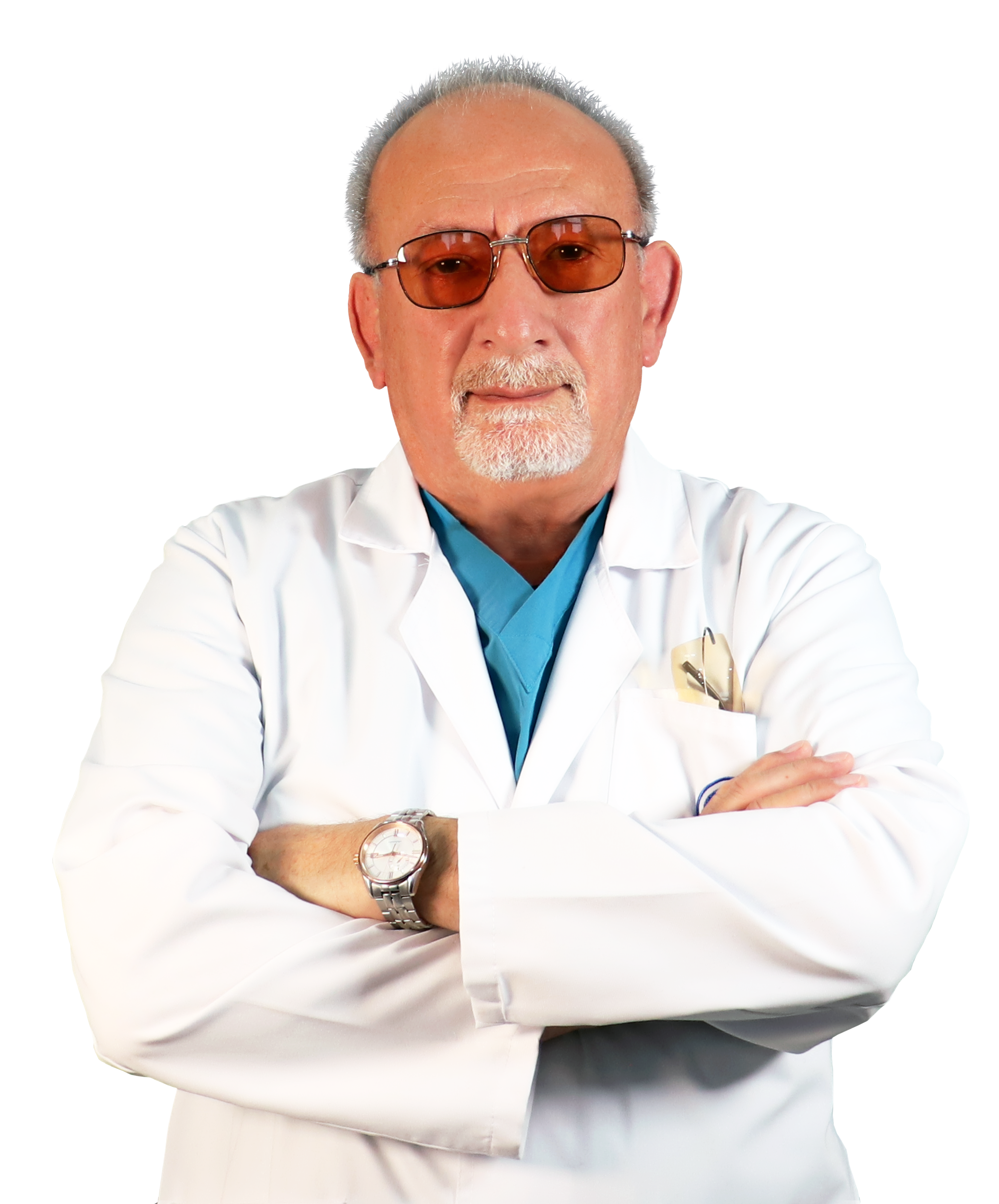Nodular Thyroid (non-toxic) goiter
It is estimated that more than 1 billion people in the world live in iodine deficient areas, which includes the Trans-Caucasus, Russia, Continental Europe, Central parts of Africa, almost all areas in South America. Iodine deficiency and the lack of its supply is the most common manifestation of a diffuse (whole thyroid gland ) thyroid ( non-toxic ) goiter, without the gland functional disorders. With iodine deficiency the enlargement of the thyroid gland is a compensatory reaction, where the deficiency of ” construction material” iodine in the thyroid, is compensated by thyroid enlargement to ensure the adequate hormonal synthesis. The most common manifestation of iodine deficiency is of the development of nodular goiter. Nodes develop 2-4 – times more frequently in women. Various studies revealed that the possibility of malignancy in thyroid unit of palpable nodes is up to 5%. Nodular goiter treatment: Conservative treatment can only be applied to nodular, colloid goiter cases, when a node is larger than 3 cm in diameter. Predominantly such a nodular formations occur. The goal of the treatment is to reduce the size of the nodes. Before treatment, patients with nodes greater than 1 cm in diameter undergo the node biopsy, which provides confirmed cytological diagnosis. If cytologically it is determined that the thyroid gland shows follicular ademona and malignant tumor is suspected, surgical treatment is indicated.
Indications for Surgery
Patients requiring surgery fall under the following categories :
- Patients with an established diagnosis of thyroid cancer .
(Timely operation results into 95% – rate of full recovery) ;
- Patients of any size and number of nodular thyroid
Formations, which may be susceptible to turn into malignant tumors based on the biopsy results
- Patients with rapidly growing nodular formations.
(Nodes increase twice in size in half a year )
- Patients with nodes of larger than 3cm – regardless of biopsy results
- Patients with chronic nodular formations in case of autoimmune thyroiditis
( increased risk of malignant tumors )
- Patients who have difficulty in breathing and swallowing due to enlarged gland (due to diffuse gland or nodes)
Surgery
Operations are carried out in the thyroid gland using the general anesthesia (narcosis) , which gives the opportunity to achieve better results in the treatment; reduces the risk of complications and protects the patient from emotional trauma . Transaction volume is determined by the nature of the injured gland, in some cases, the patient’s age and sex is also taken into account.
At present, the thyroid gland operations include Hemithyrodectomy (partial excision of the gland), and Thyrodectomy (excision of the full gland) . Previously accepted operations were removal of some nodular growths in the thyroid gland has been considered to be fallacious, since the majority of patients had to go through necessary repeated interventions due to degeneration of parts of the nodes. After the surgery in our clinic, all patients get cosmetic stitches. Surgeons modern sewing materials and our experience gives us the opportunity to achieve the best results in the majority of patients; postoperative scar remains almost invisible.
Post operative period
Typically, patients are released from the hospital on the second day after the operation. Stitches are removed on the 5th-7th day. Based on the scale of the operation, patients are prescribed hormonal treatment , which aims to compensate for the missing functions of the thyroid tissue to prevent the growth of new nodular growths . Hormonal treatment is prescribed under the supervision of an endocrinologist with individual dose of the drug prescribed selectively; The dosage of the hormonal treatment should align exactly with the need based on the size of the extracted gland tissue. Individual dose of hormones is monitored by the endocrinologist in every 6 months.
Important notes
Patients easily tolerate thyroid gland surgery and recover soon. The operation will take place almost without a trace and with minimal side effects. However, operations on the thyroid gland, are considered as one of the most complex and delicate surgeries; Such operations should be performed only by highly skilled surgeons who have mastered both surgical and microsurgical techniques at the highest level.
Diffuse toxic goiter
goiter is a type of hyperthyroidism, which is a cause of generalized increase in thyroid activity (overall). It is names as ” Diffuse ” – because the pathologic process involves the entire thyroid gland. “Toxic” because the patient feels fever as if he has an increased temperature, as an infectious disease. ” Goiter ” – because the thyroid gland is enlarged.
Causes for Diffuse toxis goiter have not be fully researched, howevery certainly a leading role in the development of diffuse toxic goiter is a dysfunction of the immune system , which protects us form bacteria and viruses, as well as formation of abnormal cells such as cancer cells.
10-15 % of people are affected by the immune system problems, which can be inherited. In case of diffuse toxic goiter antibodies are produced against certain proteins, which are located on the surfaces of cells in the thyroid gland. As a result, gland cell stimulation occurs, with a focus on increased production of hormones, followed by the hyperfunction of the thyroid gland.
The disease occurs predominantly in women, 8 – times more often than in men. Develops mainly middle-age (30 – to – 50 years), but it is also quite common in adolescents and young patients, during pregnancy and menopause , and in patients who are over 50 years of age.
Diffuse Toxic Goiter – indications for the surgical treatment:
. The large size of goiter (45 ml or more) ;
. Disease recurrence after conservative therapy;
. increased sensitivity towards thyreostatics;
. Node is palpable in thyroid gland;
. Goiter location behind the breast;
. Pregnancy or planned pregnancy.
Surgery
Conducted only after reaching a state of compensation, because, otherwise, the early operation may develop a thyreostatic crisis. Operations are carried out with general anesthesia (narcosis) , which gives better treatment results, reduces the risk of complications and protects patients from emotional traumas. To prevent recurrence of the disease, ( maximum ) marginal subtotal resection ( maintaining 4-6 gr of thyroid tissue) , or complete thyrodectomy (complete removal of the thyroid gland) is performed. After the surgery in our clinic, all patients get cosmetic stitches. Surgeons modern sewing materials and our experience gives us the opportunity to achieve the best results in the majority of patients; postoperative scar remains almost invisible
Post operative period
Typically, patients are released from the hospital on the second day after the operation. Stitches are removed on the 5th-7th day. Based on the scale of the operation, patients are prescribed hormonal treatment , which aims to compensate for the missing functions of the thyroid tissue to prevent the growth of new nodular growths . Hormonal treatment is prescribed under the supervision of an endocrinologist with individual dose of the drug prescribed selectively; The dosage of the hormonal treatment should align exactly with the need based on the size of the extracted gland tissue. Individual dose of hormones is monitored by the endocrinologist in every 6 months.
Important notes
Patients easily tolerate thyroid gland surgery and recover soon. The operation will take place almost without a trace and with minimal side effects. However, operations on the thyroid gland, are considered as one of the most complex and delicate surgeries; Such operations should be performed only by highly skilled surgeons who have mastered both surgical and microsurgical techniques at the highest level.
Laparoscopic cholecystectomy
Gallbladder removal
Surgical excision of Hernia



